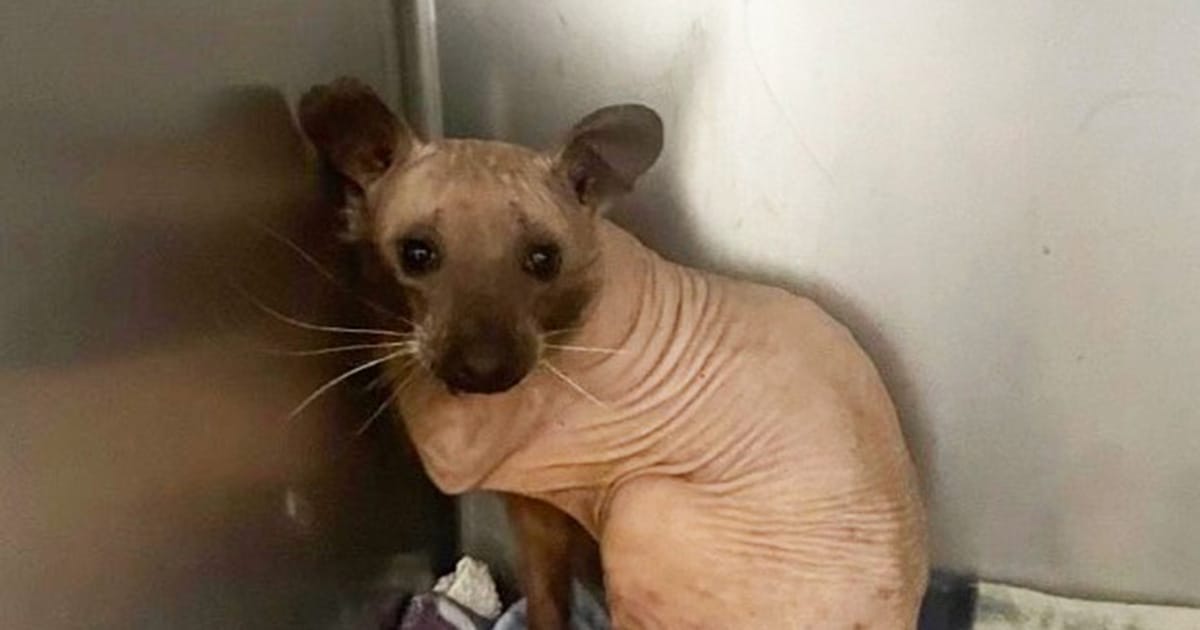
For animals, fur is more than simply a stylish accessory—it keeps them warm in the winter months. It also contributes to their distinct look. However, did you know that some animals could look drastically different when they are completely bald?

After being saved, an amazing creature that seemed like a hairless cat turned out to be an exceptional and unusual hairless raccoon. Let’s explore the tale of this unusual creature and her amazing survival!
Hope for Wildlife, a charitable conservation group based in Nova Scotia, had an unexpected guest last month. During the bitterly cold winter, a couple in West Arichat found a shivering animal in their property. The animal seemed like a Sphynx cat at first, but it was actually a completely bald raccoon!

Without its distinctive fur pattern that resembles a mask, raccoons are difficult to distinguish. This small animal, a northern raccoon, is completely bald as a result of severe alopecia. Although balding raccoons have been seen before, according to Hope for Wildlife director Hope Swinimer, this particular raccoon’s condition was the worst. It’s merely tufts of fur around the feet, ankles, and nose, she said. This situation is serious.
The raccoon was named Rufus, after the character from the show Kim Possible who was a naked mole rat, even though it was a female. The precise reason behind Rufus’ hair loss is still unknown. According to the rescue group, she might have an autoimmune disease that is harming her hair follicles. Since her skin seemed healthy, they ruled out conditions including parasites, mange, and fungal illnesses.
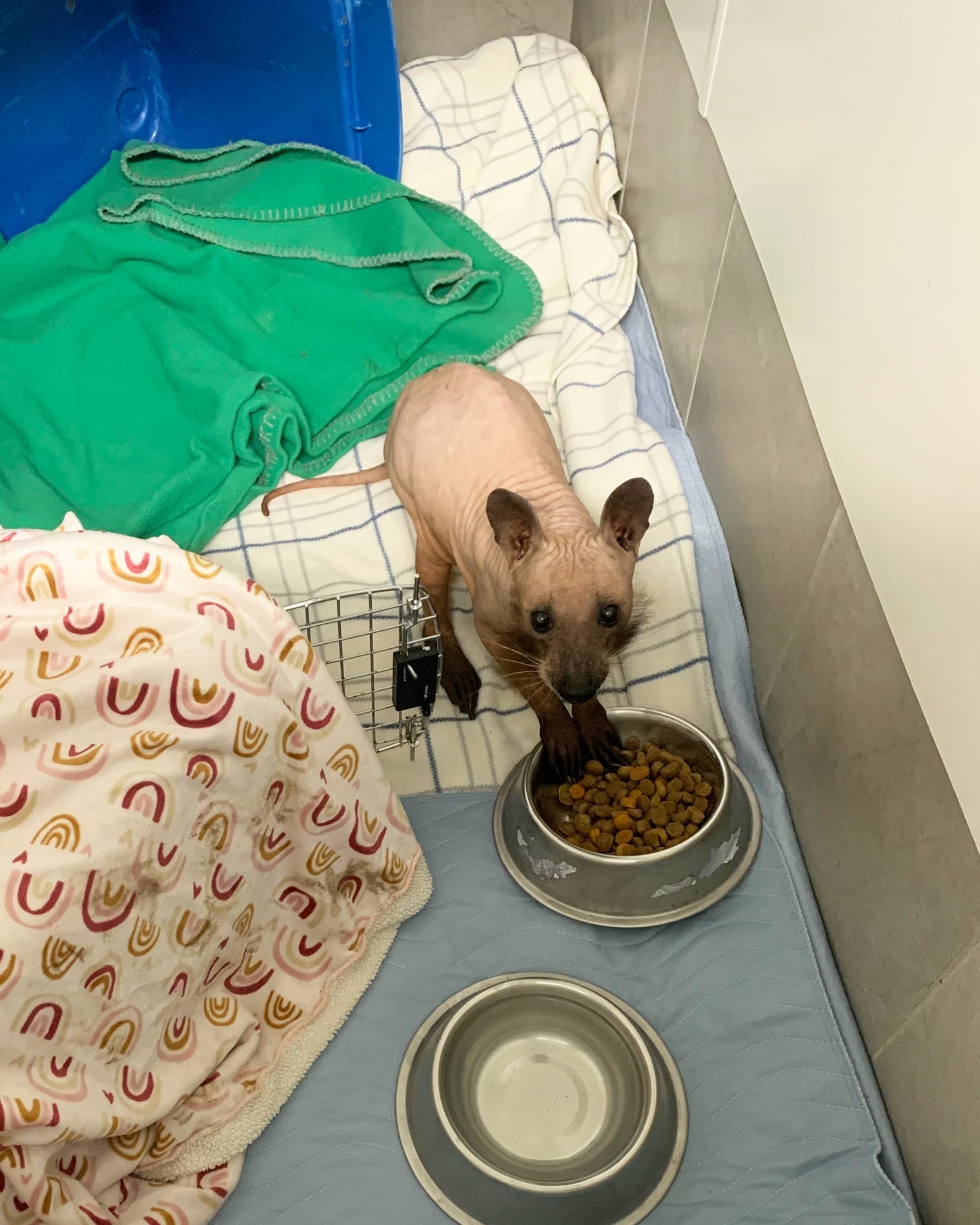
Raccoons depend on their fur to keep warm and shield them from the weather. The fact that Rufus avoided frostbite or worse throughout the hard winter without fur astounded the rescuers.
“We’re pretty amazed that this little lady survived the winter without fur and without getting frostbite or worse,” they gushed on Facebook. They went on to talk about Rufus’ lively attitude and said that her own willpower was the reason she was able to survive. Despite her initial state of debilitation, she eventually began to exhibit indications of recovery, developing resilience and strength.
Rufus might end up staying at the shelter permanently given the conditions. She’ll have a dedicated habitat with an outside area she can crawl into to be warm. In addition, the environment will provide conveniences like nesting boxes and hammocks.
This amazing hairless raccoon has us completely enthralled! We are happy that Rufus was discovered and is finally getting the attention she needs. It’s amazing how she was able to live in the wild for such a long time.Please tell people about this amazing story if you love animals!
Tom Cruise thought about becoming a monk while married to “extremely brilliant” woman before Nicole Kidman
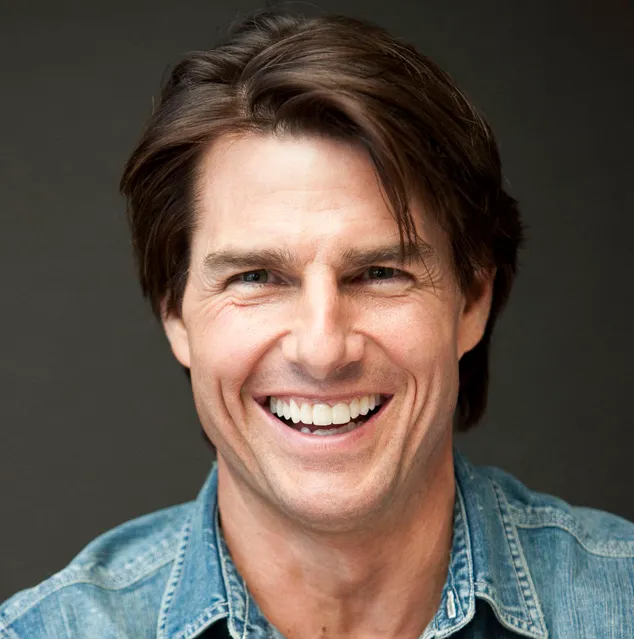
Tom Cruise, one of the most well-known American movie actors, became well-known at a very young age. When he acted in the now-classic film “Top Gun,” the actor was just 24 years old.
Fans might not be aware, though, that Cruise was given a dyslexia diagnosis when he was just seven years old. The actor has also been a longstanding follower of the Church of Scientology, and he attributes their help in helping him overcome his dyslexia.

Mimi Rogers, Cruise’s first wife, introduced him to the faith. Since her father was a member, he introduced Cruise to his faith and extended an invitation to a meeting at the Hollywood Scientology facility.
Cruise is a member of the Hollywood Educational Literacy Project’s board of directors. With the use of this learning tool, adults and children can receive free one-on-one instruction.
Cruise claimed that even with many tutors’ assistance, he had made every effort to comprehend the reading material, but he was unable to retain what he had read.
Cruise wasn’t able to acquire the assistance he need until he discovered L. Ron Hubbard’s Scientology study tools.
The actor greatly appreciates H.E.L.P. technology because it enabled him to overcome his learning problem by placing the object he was studying in front of him. The idea is to “have an airplane in front of you, if at all possible, while you’re studying an airplane.”
The airplane example is appropriate as Cruise has acknowledged to others that he has always wanted to become a pilot. Despite getting to pretend to be a pilot in “Top Gun,” his dyslexia prevented him from pursuing a career in aviation.
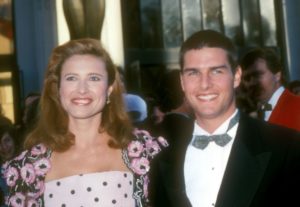
Instyle magazine claims that Cruise and Rogers first spoke in an interview with Rolling Stone in 1986. However, the actress was seeing his friend at the time, so she was powerless to stop it.
Nonetheless, Tom claimed that her “extreme brilliance” piqued his interest. Things moved swiftly once they grew close, and they soon started discussing marriage.
It was not an easy effort, nevertheless, to marry one of the most well-known guys in Hollywood; according to Instyle, they hid the wedding by referring to it as “the project.” The project was carried out in 1987. They seemed to have had a lovely, private ceremony.
The actor claimed that Rogers improved him as an actor and that he couldn’t see himself with anyone else. He continued, saying:
“My wife is the most important person in my life. My best friend is her.
According to Andrew Morton’s unofficial biography of Tom Cruise, the actor filed for divorce on December 9, 1989.
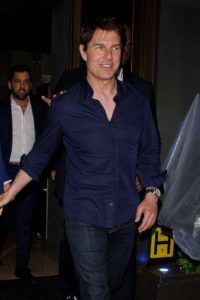
But Mimi gave a detailed account of the circumstances behind her marriage’s dissolution in an interview. She acknowledged that it “bothers” her that her age is frequently mentioned in the media. Tom Cruise was six years her junior.
The well-known actress Rogers maintained, though, that their separation had nothing to do with Scientology, celebrity, or Cruise’s jealously.
The actress disclosed that Cruise had given serious thought to becoming a monk, a career choice that would not work with a married life. As a result, their marriage failed.
Although Cruise maintains the privacy of his personal life, Instyle reports that there are speculations circulating that he dated his “Mission Impossible” co-star Hayley Atwell from 2020 to mid-2022 and is currently unmarried.
Regarding Rogers, she wed producer Chris Ciaffa in 2003; the couple is parent to two kids, Charlie and Lucy.
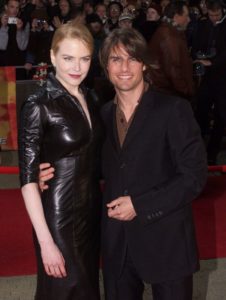
Following their divorce, Cruise and Rogers announced that the actress had quit Scientology. He continues to be an involved member of the church, for his part.
According to some sources, the church of Scientology played a role in the breakup of Cruise’s two marriages—the first to Rogers and the second to Nicole Kidman.
The actor, who still attends his church, feels that Scientology was a major factor in his success and in helping him get over his dyslexia.

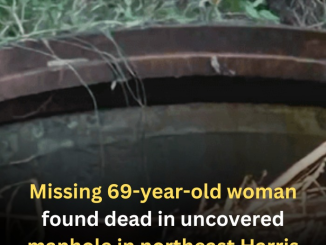

Leave a Reply